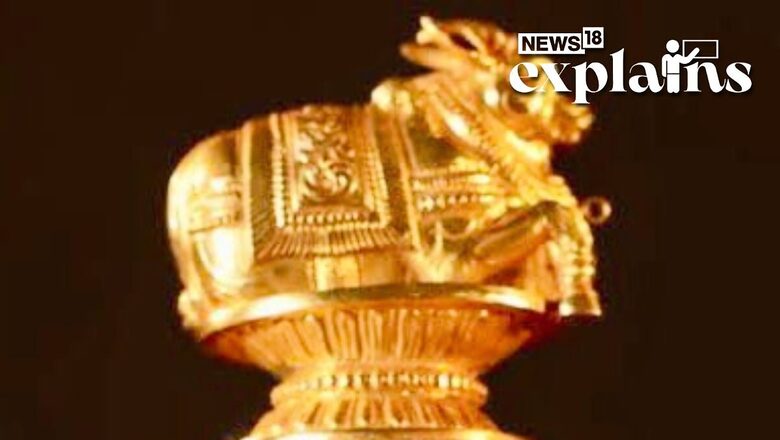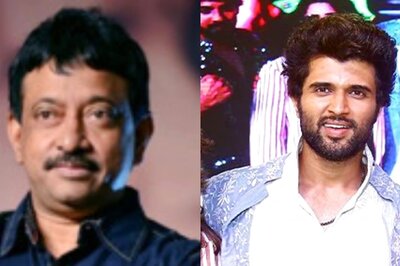
views
Congress leader Jairam Ramesh on Friday claimed there is no documented evidence of Lord Mountbatten, C Rajagopalachari and Jawaharlal Nehru describing the ‘Sengol’ as a symbol of transfer of power by the British to India. He also alleged that Prime Minister Narendra Modi and his drum-beaters are using the ceremonial sceptre for their political ends in Tamil Nadu.
The ‘Sengol’ will be installed close to the Chair of the Lok Sabha speaker after the new Parliament building is inaugurated by Modi on May 28, an event 20 Opposition parties, including the Congress, are boycotting. On Thursday, the BJP had alleged that the Congress displayed disregard for Hindu traditions by calling the sacred ‘Sengol’ a “golden stick gifted” to India’s first prime minister Nehru and tucking it away in a museum. The vesting of the “sacred ‘Sengol'” with Nehru, on the eve of India’s Independence, was the exact moment of transfer of power from the British to India, BJP leader Amit Malviya had said.
On Twitter, Ramesh said, “The sceptre is now being used by the PM (prime minister) and his drum-beaters for their political ends in Tamil Nadu. This is typical of this brigade that embroiders facts to suit its twisted objectives. The real question is why is President Droupadi Murmu not being allowed to inaugurate the new Parliament.”
He claimed that a majestic sceptre conceived of by a religious establishment in the Madras province and crafted in Madras city (now Chennai) was indeed presented to Nehru in August 1947. “There is no documented evidence whatsoever of Mountbatten, Rajaji and Nehru describing this sceptre as a symbol otransfer of British power to India. All claims to this effect are plain and simple — bogus,” he said.
However, sources told News18 that the Sengol ceremony, regarded as sacred, took place just before Pandit Nehru hoisted the national flag and delivered his historic Tryst with Destiny speech. While the media, both Indian and foreign, reported on the ceremony surrounding August 14, 1947, it remained unrecorded due to the urgency of arranging the event in the midst of partition and violence. Consequently, the Sengol ceremony and its vesting ritual seemed to fade from the institutional memory of the Indian state.
However, starting in 2017, reports emerged in the Tamil media, detailing how the government of India followed the sacred Sengol vesting model of the Tamil Nadu’s Chola Kings for the transfer of power from the British to the Indians. These reports mentioned that minutes before Prime Minister Jawaharlal Nehru addressed the nation, the sacred Sengol vesting ceremony was conducted. The ceremony was administered by a saint from Tiruvavaduthurai Math, along with a team of musicians and Oduvars (reciters) specially invited by the government. Following the Chola tradition, the Adheenams handed a golden Sengol, topped with a Nandi (bull) and purified with water from holy rivers, to the Prime Minister. Meanwhile, sacred Tamil texts, particularly Thevaram, were sung to symbolize divine blessings and the command to rule with justice and fairness.
According to those reports, the Viceroy Mountbatten inquired about the traditional ritual to symbolize the transfer of power, to which Pandit Nehru sought the advice of Rajagopalachari, popularly known as Rajaji. It was Rajaji who conceptualized the Chola model of assumption to the throne and approached the Tiruvavaduthurai Math to perform the sacred function in Delhi. Rajaji made travel arrangements for the Adheenam team to come to Delhi and oversee the vesting of the Sengol in the Prime Minister’s hands, following the age-old ritual observed during the reign of the Chola kings. The Tamil media also reported that the purpose behind the Sengol Vesting was to avoid directly assuming power from the British and instead receive authority from the hands of saints.
According to the media reports, the entire event took place hastily. Due to the senior Adheenam’s illness, his junior and the team of saints, singers, and musicians were sent to carry out the ceremony. A 5-foot long gold-plated Sengol, crafted by Vummidi Bangaru Chetty, a renowned jeweler in Chennai, was used in the ceremony. Approximately 15 minutes before Pandit Nehru addressed the nation at midnight on August 15th, the saint presented the Sengol to him. As the 11 verses of the Thevaram, specifically the Kolaru Pathikam, were sung to invoke the blessings of Lord Shiva, Pandit Nehru held the Sengol, signifying his assumption of power with the assurance of eternal rule, sources said. Photos of the event, showing Pandit Nehru reverently holding the Sengol while the saints performed the recitation, were available with the Tiruduthurai Adheenam and were also published in the media. These photos were reportedly displayed in the Ashram of the Tiruvaduthurai Adheenam premises.
The media’s description of the event was meticulous, providing details such as Vummidi Bangaru Chetty jewelers crafting the Sengol based on the design provided by the Adheenam. The reports also mentioned that the entire sacred ceremony was kept secret from the public, and the Sengol, representing the transfer of power, was kept in Anand Bhavan in Allahabad.
Following these events, the Tamil Weekly Thuglak, founded by the renowned Tamil journalist Cho Ramaswamy, published a comprehensive account of the historicity of the event. It traced the information back to a recorded conversation between the revered saint, the Kanchi Paramacharya, and his disciples. The conversation, which seemed to have taken place on Independence Day in 1978, was later found in a book published after the Kanchi Acharya’s passing in 1994.
The Ceremony
The Sengol ceremony, including the handing over of the golden-plated Sengol, took place at the residence of Pandit Nehru. The Chief Priest of the Thiruvaduthurai Adheenam Temple in Tanjore, Tamil Nadu, presented the Sengol to Nehru on the night of Thursday, August 14, 1947, on the occasion of India’s Independence, as per the sources, citing available material. Along with the Sengol, an address from the Chief of the Temple was also presented to Pandit Nehru.
Based on the available information from the search conducted in the records holdings of the National Archives of India, contemporary newspapers, books, and online sources, the following facts were gathered:
• The golden Sengol was adorned with jewels.
• Its estimated worth at that time was Rs. 15,000.
• Vummidi Bangaru Chetti and Sons, Jewellers and Diamond merchants of Madras (now Chennai), crafted the Sengol. The Vummidi Bangaru Chetty family, who made the Sengol, has confirmed their involvement, but the eldest member who worked on it, now over 95 years old, cannot recall the specific details. They have, however, preserved a photograph of the event in their house.
• The commissioning of the Sengol was done by His Holiness Sri-La-Sri Ambalavana Desika Swamigal, the Mahasannidanam of the Thiruvaduthurai Adheenam in Tanjore.
• The Sengol was brought to Delhi by Sri-La-Sri Kumaraswami Thambiran of Thiruvathigal and Mr. R. Ramalingam Pillai, Dakshinam Superintendent of the Adheenam.
• The presentation of the Sengol to Pandit Nehru took place at his residence on the night of Thursday, August 14, 1947.
According to excerpts which detail the greatness of the Tiruvaduthurai Adheenam, the following information is revealed:
• Lord Mountbatten asked Nehru about the symbolic representation of the transfer of power.
• Nehru consulted Rajaji, who suggested that in the tradition of Tamil kings assuming power, the Rajaguru would hand over the Sengol to the king, and they could have a saint perform the same ritual.
• Rajaji contacted the pontiff of the Tiruvaduthurai Adheenam and requested him to conduct the sacred ritual.
Despite the Chief Pontiff’s ill health, he made all the necessary arrangements and had the Sengol, adorned with a Rishab (bull) on top, crafted by Vummidi Bangaru Chetty Jewellers.
• Sadaiyappa Thambiran Swami, the deputy of the Chief Pontiff, accompanied by the singer (othuvar) Asthana Nadaswara Vidwan (the renowned Rajarathinam Pillai), flew to Delhi in a specially arranged flight.
• On the night of August 14th, at 11:45, the singer recited the 13 verses from the Tamil text Thevaram, authored by Saint Thirugnanasambandar (one of the highly celebrated nayanmars). Each verse concluded with the blessing, “you will rule, it is my command.”
• Sadaiyapa Swami presented the Sengol to Mountbatten, received it back from him, sprinkled holy water on it, invoked the divine name, and handed it to Pandit Nehru, blessing him to assume power.
• The Nadaswara Vidwan Rajarathinam played the nadaswaram, and Nehru received holy ash and a sandal mala.
After presenting the Sengol, Thambiran Swami told Pandit Nehru, “This golden Sengol is your Sengol and a symbol of our rule.” Upon hearing this, the singer repeated twice, raising his voice, “you will rule, it is my command.”




















Comments
0 comment